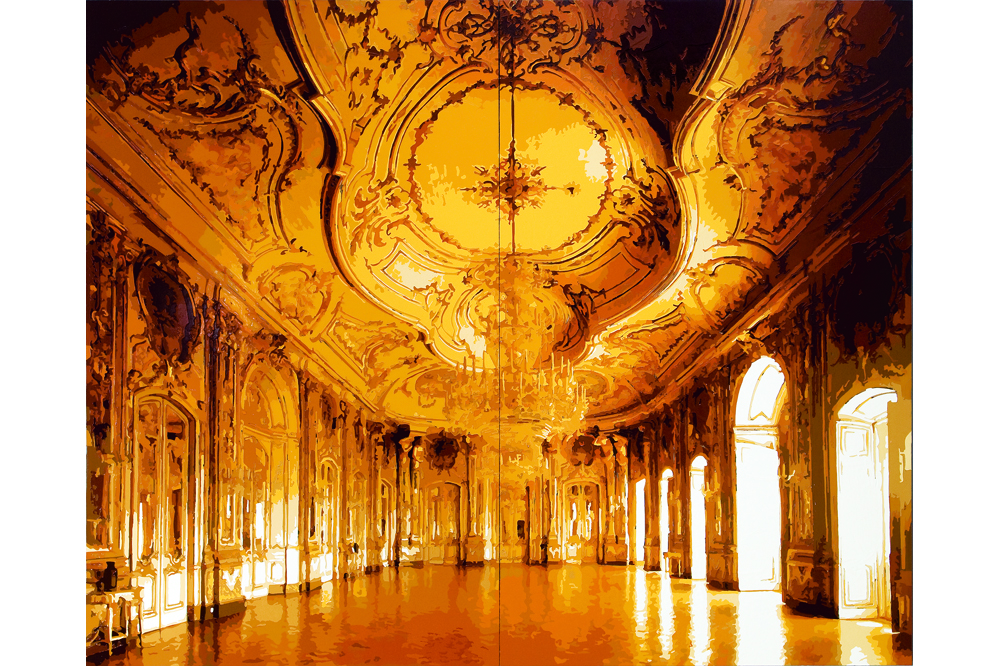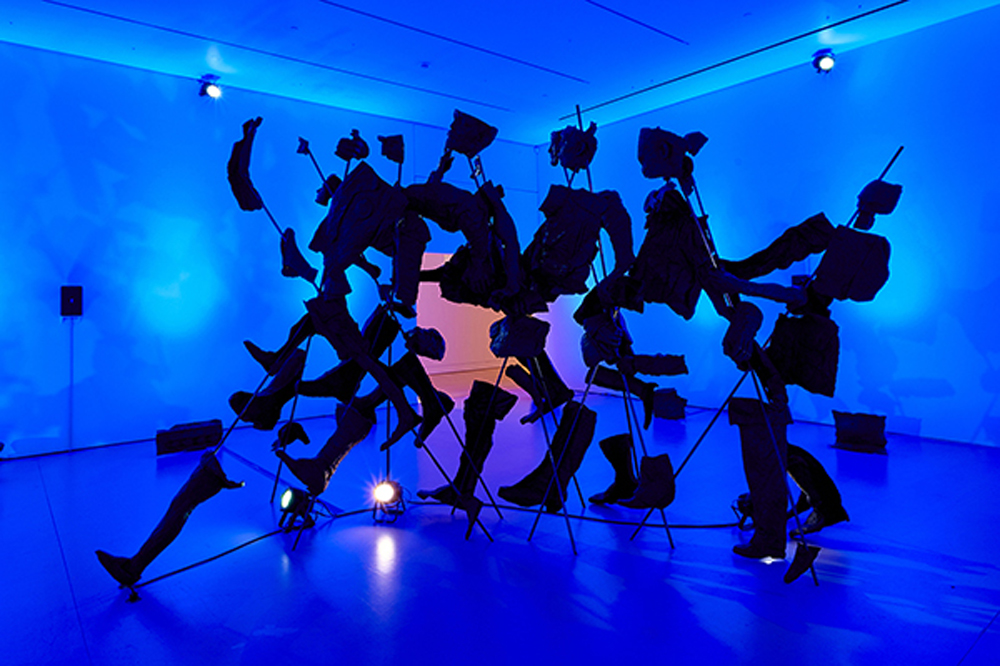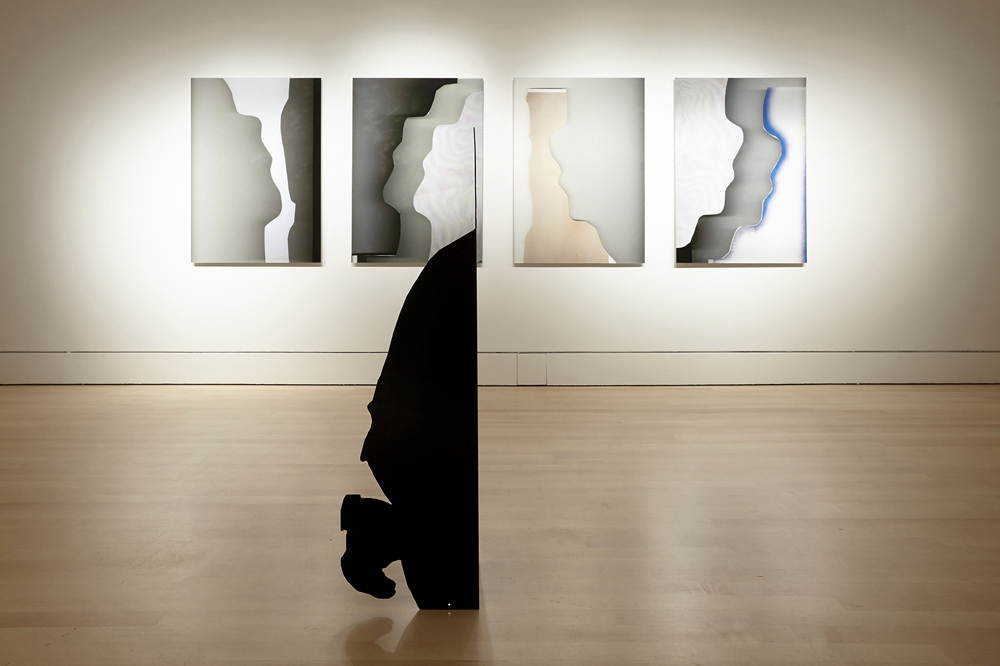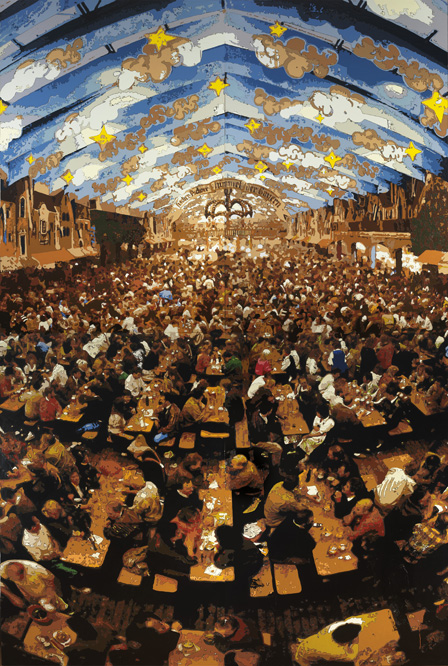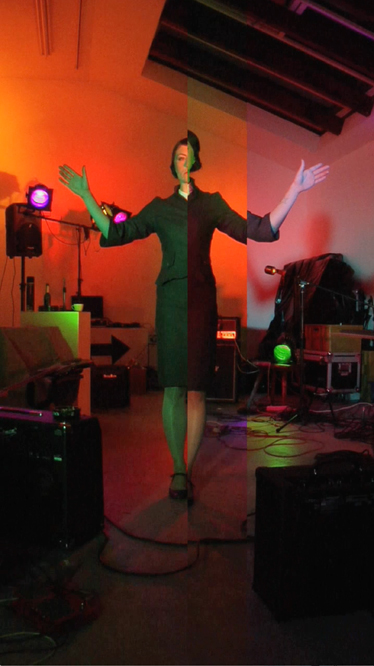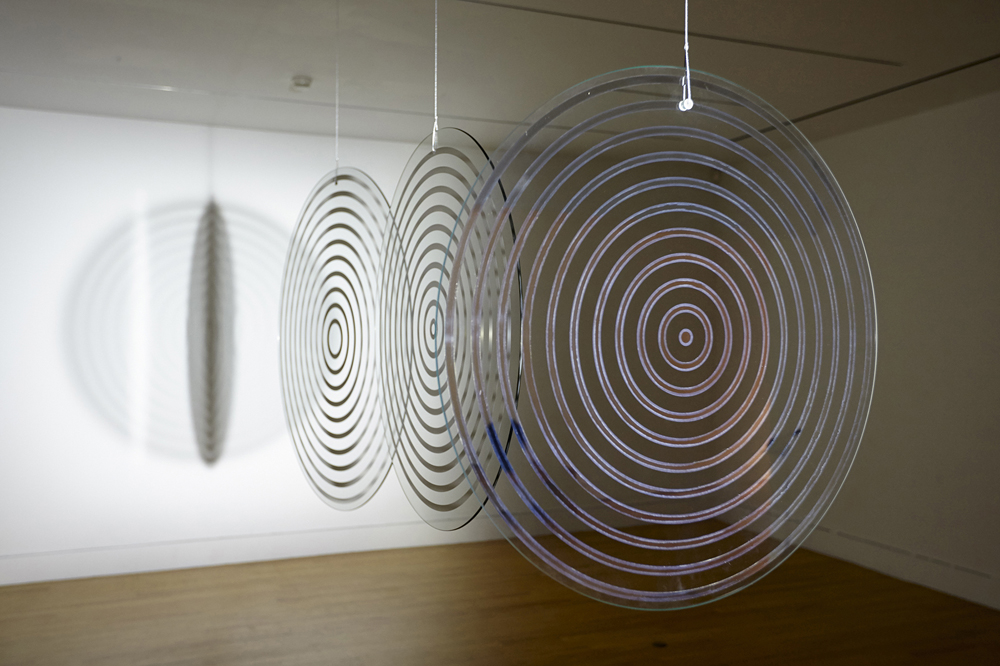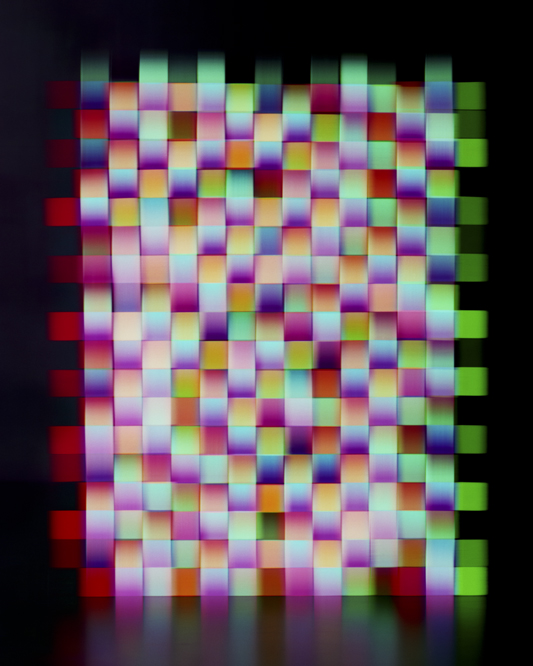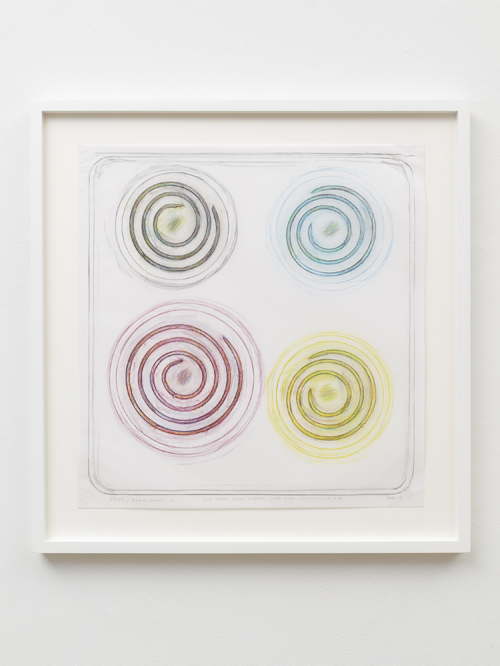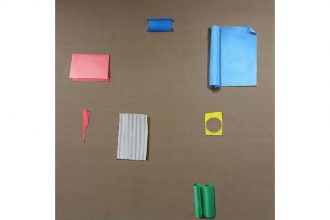Both experienced and inexperienced gallery visitors are familiar with the standardized formula of spectatorship: Each artwork is treated as a discrete, enclosed structure containing cues and forms of evidence that must be decoded through a rigorous visual interpretation. As one begins to think beyond the frame, beyond a business-as-usual approach to spectatorship, a single question should be addressed: Is it possible to propose alternative ways of reading and experiencing contemporary art without resorting to problematic didactics?
are you experienced?, a major group exhibition conceived by the Art Gallery of Hamilton’s curator of contemporary art, Melissa Bennett, addresses this question by focusing on the relationship between spectacle, spectatorship, and self-knowledge through the work of six acclaimed artists (four Canadian, two international): Nadia Belerique, Jessica Eaton, Olafur Eliasson, Dorian FitzGerald, Hadley+Maxwell, and Do Ho Suh. Through a diverse selection of works, the exhibition attempts to locate a self-reflexive and affective approach to spectatorship, drawing from the perspective that “experience creates meaning,” and therefore, experience can be agency.
Bennett’s interest in the experience of spectatorship can be linked to what is largely understood as the “affective turn” in contemporary political, cultural, and aesthetic theory. The “affective turn” is largely attributed to the influential writings and translations of Canadian philosopher Brian Massumi, whose work from the 1990s onward posits a shift from the study of representation, rhetoric, and semiotics towards sensation and experience. Further, this approach is linked to the relationship between affect, artistic production, and curatorial studies first explored in the writings of Toronto-based theorists Jennifer Fisher and Jim Drobnick (notably, the pair wrote the catalogue’s essay on Hadley+Maxwell). In short, affect theory interrogates the margins of the known and knowable through an emotionally-focused approach. It’s often deemed a “non-representational theory” since the complexities of our sensorial (or affective) relations can’t simply be decoded by focusing solely on the determinate material aspects of objects and images.
are you experienced? is spread out across the first floor of the museum, with each artist occupying their own gallery. Visitors enter the space and immediately encounter the Berlin-based duo Hadley+Maxwell’s Ritual for an Untimely Life (2009), a single-channel video work that depicts a woman performing rigid choreography that’s directed at the viewer. Dressed in a formal flight-attendant’s uniform, she stands alone in an enclosed, darkened studio cluttered with various lighting and sound equipment. Her image is split down the middle, with each side of the frame extracted from a different recording of the performance. It’s impossible to differentiate whether one side of her body “leads” the motion. She offers direction with no purpose and no end. We accept the ambiguity of her direction and continue forward. Because the exhibition purports to interrupt the idea that artworks demand proper aesthetic interpretations, this work offers an appropriate welcoming gesture.
Dorian FitzGerald has produced the clear standout work, Hacker-Pschorr Beerhall (2005), a towering eighteen-foot, four-panel painting that, due to its size, has never been publicaly exhibited before. Because the ceiling of the gallery is too short to support its height, the painting has been installed at a forward-leaning angle. Hacker-Pschorr was created using a technique in which a scaled photographic image is transferred onto the surface of the canvas and subsequently outlined and filled-in with a thick application of caulk and acrylic paint. The paradox of FitzGerald’s work is that, from a distance, the image is characterized by a hyper-realistic, almost photographic precision – yet as we move closer it becomes increasingly formless. Through these material and spatial considerations, Hacker-Pschorr Beerhall interruptions the cool rationalism of the white cube and sharpens our attention to the fragility and ephemerality of visual recognition.
Toronto artist Nadia Belerique presents a stimulating installation composed of selections from the series Have You Seen This Man (2014) and I Hate You Don’t Leave Me (2015). Visitors first encounter a series of photographs behind reflective glass that depicts the faint, indistinct surface of Belerique’s scanner bed. Several of the images represent cut-out and fragmented objects while others simply reveal the shadows from the scanner-bed itself. Each photograph reproduces the artist’s smudged fingerprints that remain on the bare screen. The photographs are accompanied by several sculptural cut-outs that evoke an abstraction of the body in space. Grounding this, a carpet extends across the main gallery, marked by permanent black footprints that Belerique has created by applying a light-sensitive substance to the soles of her shoes and repeatedly walking across its surface. With this three-part installation, Belerique offers up an intentionally unresolved experience by staging her own bodily absence through unconventional representational tactics.
The exhibition includes two other works by Hadley+Maxwell that are lacking the affective subtlety these previous works embody. When That was This (2015) is a multimedia sculptural installation featuring over three-hundred loosely interconnected anatomical fragments cast in the collective’s classic Cinefoil. Multiple stage lights project shifting, colored shadows across the room while surround-sound speakers play overlapping spoken-word performances from All Quiet on the Western Front by Erich Maria Remarque, and The Autobiography of Alice B. Toklas by Gertrude Stein. In the final room the duo presents I (2003), an intense light-and-sound installation that includes a video depicting an uninhibited female figure dancing to thrash-metal music. Through headphones we can sync up with the dancer’s music, and enter into a totally immersive, psychedelic atmosphere.
Several of the other installations included in the exhibition will be uniquely familiar to the Canadian artworld. For example, the exhibition features a collection of works from Jessica Eaton’s widely-exhibited series Cubes for Albers and Lewitt (cfaal) (2010-), wherein the artist employs a now well-cited improvisational film and darkroom editing process that depends on a complex mise-en-scène visual language. The exhibition also features blue-chip Korean artist Do Ho Suh’s Apartment, New York, NY 10011 (Bathroom) (2003), a memorable work on loan from the Art Gallery of Ontario (AGO), as well as the Danish-Icelandic marquee artist Olafur Eliasson’s light installation titled Triple ripple (2004). In addition to some drawings (“rubbings”) by Do Ho Suh, inclusions by FitzGerald, Belerique, and Hadley+Maxwell are the only participants to contribute previously un-exhibited work. Bennett’s relatively dated selection underscores one of the notable drawbacks of the exhibition.
Although are you experienced? deserves attention for successfully refocusing some of the basic elements of affect theory for non-academic audiences, the notion of “curating affect” remains relatively opaque, even upon consulting the extensive catalogue that accompanies the exhibition. Several questions arise: If affect is, in essence, that which is non-representational, how could we ever begin to measure it either positively or negatively in a curatorial context? How is it possible that some artists or artworks evoke this “experience” more than others? Ultimately, this uncertainty emerges out of the ambiguous distinction between affect theory as a theoretical attitude and affect theory as a programmatic curatorial approach.
Even with these questions in hand, though, Bennett’s broader conceptual approach introduces a refreshing, original reading of affect theory by focusing on the “non-representable” alienation felt in the hurry-up time of late capitalism. In her curatorial essay, for example, Bennett clearly states that the exhibition seeks to address the overwhelming flood of data we contend with. This reading is achieved by grouping together artists interested in slowing down perception by highlighting unresolved processes of becoming. Collectively, they underline traces, fragments, excesses, and simulations of experience that never fully reveal themselves. This slowing-down of perception enacts a queering of the white-cube viewing conventions: an eighteen-foot painting that does not fit; an exposed, worn carpet resting on top of the polished hardwood floors; a translucent room within a room; transient shadows projected onto blank walls, and so on. Following Bennett’s approach, it’s evident that we become “experienced” in the pursuit of the immeasurable and fragile ambiguities that exist within the seams of the gallery.

